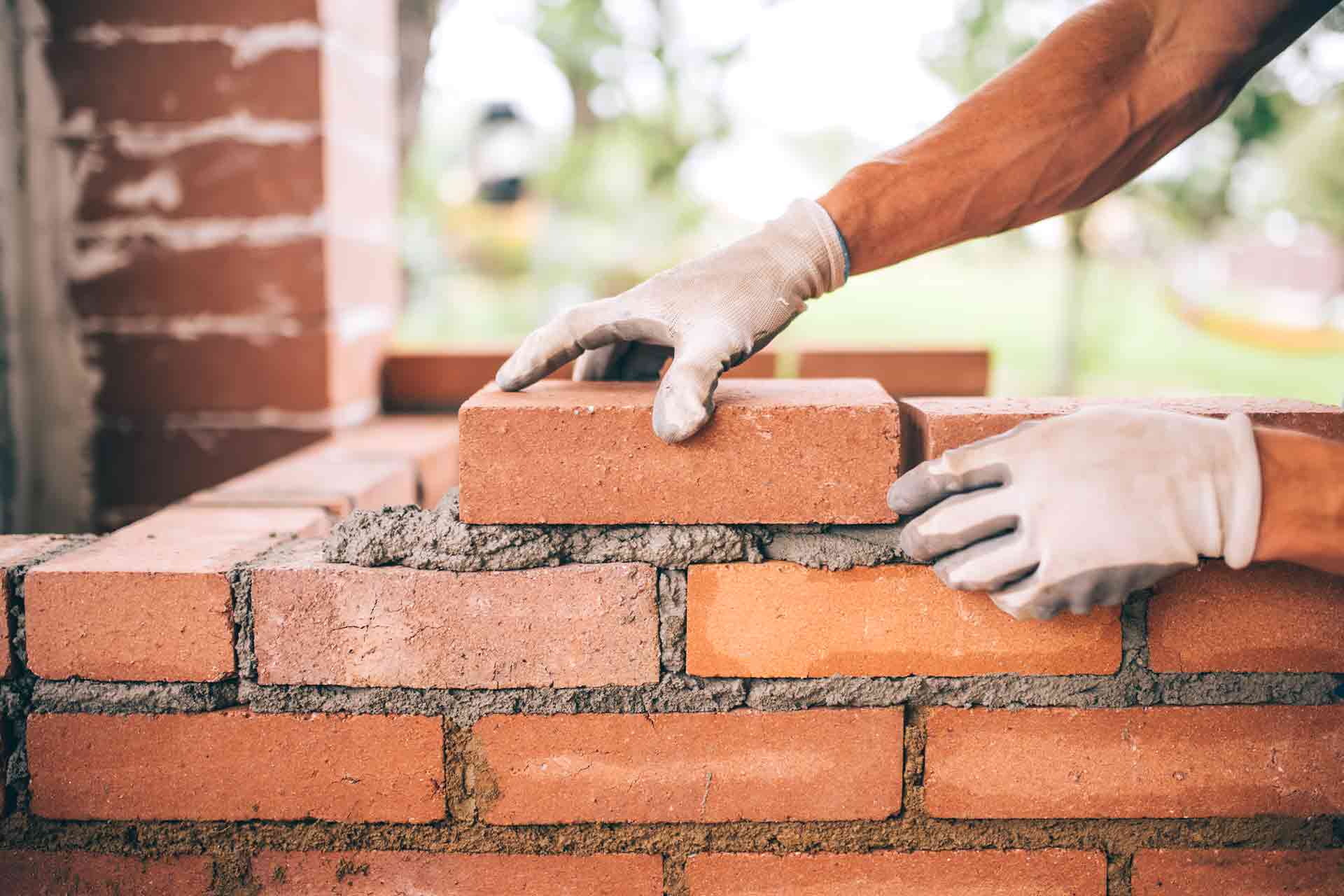Some Known Details About Bricklayer Auckland
Wiki Article
What Does Bricklayer Auckland Mean?
Table of ContentsThe 10-Minute Rule for Bricklayer AucklandThe Ultimate Guide To Bricklayer AucklandBricklayer Auckland - QuestionsThe Best Strategy To Use For Bricklayer Auckland
The distinction between No and also classic masonry is in the laying of the brick. The block is no longer pressed vertically, yet tilted.In addition, we additionally paid interest to a great proportion in between the size as well as width of the block so that it is perfect for working with a cot bond. Bricklayers are an essential occupation in the building industry, responsible for laying bricks, pre-cut rock as well as concrete blocks in mortar. Bricklayers construct, extend and also repair domestic and business buildings, and various other structures such as structures, wall surfaces, chimneys or decorative stonework.
Your time as a bricklaying apprentice will usually be split between your employer as well as training carrier (such as a college), with at least 20% of your typical working hours invested in training. Your training may occur every week, each month or in a different block of time, and also it can happen at your workplace, at your training carrier or online.
The Greatest Guide To Bricklayer Auckland
When researching construction, you inevitably find that any kind of brand-new or cutting-edge suggestion has in fact been tried over as well as over again, typically extending back decades. One of these new-but-actually-old concepts is the concept of a mechanical bricklayer, a machine to automate the building and construction of masonry wall surfaces. It's simple to see the charm of this suggestion - masonry building and construction seems nearly perfectly suited for automation.It does not seem like it would need physically intricate movements - each brick obtains a layer of mortar used, as well as is merely stocked area next to the previous one. As well as due to the fact that each physical joint is the very same dimension, placement is nearly deterministic - each block is the same fixed distance from the previous one.
These machines could not sense anything about their environment, or step where a brick needed to go - they just squeezed out a layer of mortar and also mechanically put a brick at normal intervals (Bricklayer Auckland). It's uncertain how many of these makers ever before made it past the attracting board, yet a minimum of one of these (John Knight's) was made use of to construct a brick wall surface that apparently still stands today.
Throughout the years, masonry has decreased in significance as a building innovation in the established globe, as my review here well as with it the interest in automating it. Unlike with concrete 3D printing, where there are loads of efforts to create the technology, I can just find a handful of current efforts to automate stonework. Bricklayer Auckland.
The Facts About Bricklayer Auckland Revealed
It's capable of positioning blocks in tight hallways or complicated edges, and Hadrian can build all the wall surfaces of a little structure with just a few relocations of the vehicle. Hadrian can currently establish about 200 obstructs an hour, yet they're intending to be able to do 1000 blocks a hr or even more (the blocks it establishes are different from the block masonry made use of in the US, but in US masons can set somewhere in the community of 400 blocks a day).
SAM has a collection of sensing units to make up for the motion of the platform and guarantee it's positioning blocks level, and can function with bricks go to the website of all various sizes (though it will not develop CMU block wall surfaces). It gets placed to a movable scaffolding that's raised progressively as the wall surface is completed.
The advertising material on Building and construction Robotics' website suggests that it's no much longer their major emphasis - more emphasis is given to their other product, MULE.Other than SAM and Hadrian, there are a few various other mechanical bricklayers in various phases of growth. You also see the periodic academic initiative. One location where we do see some industrial success with mechanical bricklaying is with block see post roadways - a range of business use equipments that can "publish" an area of roadway made of blocks.
Bricklayer Auckland for Beginners
A slightly different group of makers aimed at enhancing masonry efficiency is what I'll call "masonry assistants". These are equipments developed to aid with physically raising the block (they appear to be extra typical with block than block) and taking the pressure off the mason, while still permitting the mason to control it right into placement, Stonework aides date from a minimum of 1994, when the armed forces try out MOM, the Mechatronically Assisted Mason's Help.
Report this wiki page